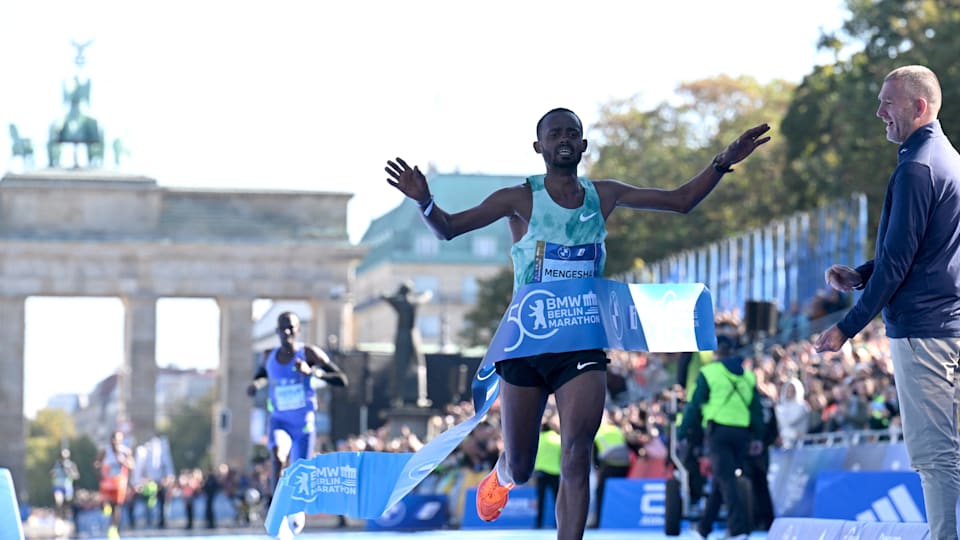STATISTICS - Berlin Marathon 1976
Gender
Category
Notes
1 % of runners doing the same or better
2 % of runners M doing the same or better
3 % of runners W doing the same or better
Top 10 Women
Top 10 Men
| 1 | I. Sensburg | 02:23:08 |
| 2 | W. Weber | 02:24:59 |
| 3 | M. Weiß | 02:26:27 |
| 4 | K. Rathgen | 02:28:22 |
| 5 | J. Rose | 02:32:17 |
| 6 | P. Bieler | 02:33:38 |
| 7 | M. Tschetschel | 02:36:12 |
| 8 | G. Hallas | 02:38:44 |
| 9 | P. Schwarz | 02:40:44 |
| 10 | B. Hopp | 02:42:28 |
Results Berlin Marathon 1976
The 1976 Berlin Marathon brought together 311 participants ready to take on the challenge of the 42.195 kilometers in an atmosphere filled with determination and passion. All the competitors were men, with an average performance time of 3h39m37s.
In this intense competition, I. Sensburg triumphed by securing first place with an impressive time of 2h23m08s. He was closely followed by W. Weber, who finished in 2h24m59s, and M. Weiß, who completed the podium with a time of 2h26m27s.

SOURCE : https://www.olympics.com
History
The Berlin Marathon was launched in 1974 under the name 'Berlin Marathon' with a small group of runners. Since then, it has become one of the most popular and prestigious marathons in the world. The marathon attracts tens of thousands of runners from around the world each year and is known for its fast course, often allowing world records to be broken. The event is also an opportunity for many charitable fundraising campaigns.
Route
The Berlin Marathon course is renowned for its speed and flat terrain. Runners start near the Brandenburg Gate and pass some of Berlin's most famous landmarks, such as Alexanderplatz, the Reichstag, and Kurfürstendamm. The route finishes at Unter den Linden, in the heart of Berlin, providing a unique and impressive backdrop for participants.
Records
- Among men, the course record is held by Eliud Kipchoge of Kenya, with an incredible time of 2 hours, 1 minute, and 9 seconds set in 2022.
- Among women, the course record belongs to Tigist Assefa of Ethiopia, with a time of 2 hours, 11 minutes, and 53 seconds set in 2023.